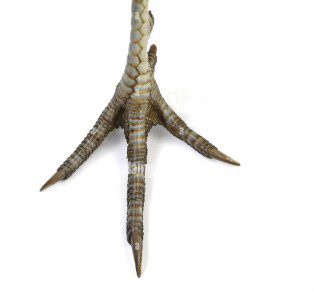

Pheasant feet can be a beneficial addition to a dog’s diet as they contain natural compounds that help maintain joint and bone health. However, it’s important to note that cooked pheasant feet can be dangerous as the bones can splinter into sharp fragments.
Including pheasant feet in a dog’s diet can provide them with glucosamine and chondroitin, which support healthy cartilage and joints. Chewing on pheasant feet can also help clean their teeth and gums and provide calcium and phosphorus for muscle growth and bone health.
If a dog’s diet already contains sufficient calcium, it’s important to limit edible bones or only feed them as occasional treats. Cooked bones can easily splinter and cause choking or mouth injuries, while poultry bone fragments can lead to rectal bleeding and intestinal obstruction.
For raw feeding, pheasant feet should be washed and checked for any remaining nails. Store-bought pheasant feet treats are typically dehydrated or air-dried, with air-dried options retaining more nutrients.
Pheasant feet, also known as pheasant toes, can bring benefits to a dog's diet. Glucosamine and chondroitin in pheasant feet support healthy joints and cartilage, and chewing on it can promote dental health and provide calcium and phosphorus. Pheasant feet can be traced back to their origin in the Northern Hemisphere and have been used as a tasty addition to dog's meals for centuries. It is important not to feed cooked pheasant feet to dogs, as the bones can splinter and cause injury. They are somewhat affordable and accessible in stores that cater to raw-fed dogs. For serving, check them for any remaining nails and wash thoroughly if feeding raw. Air-dried pheasant feet are a healthier option than dehydrated treats. As an alternative, turkey necks and chicken feet can give dogs similar benefits. Have you ever given your pet pheasant feet? How did they like it? Remember to always supervise your dog when consuming any type of bone or chew treat!